Paola Merlo
U. of Pennsylvania and University of Geneva
Analogical Structure, Minimal Contextual Cues and Contrastive Distractors: Input Design for Sample-Efficient Linguistic Rule Induction
Nov 13, 2025

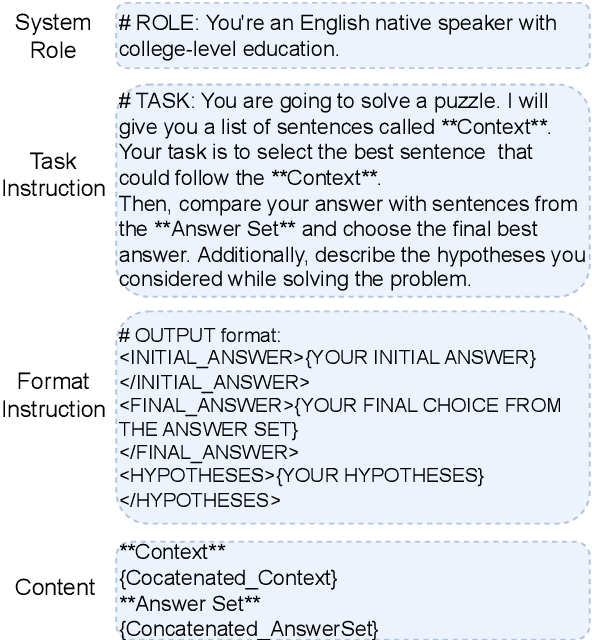
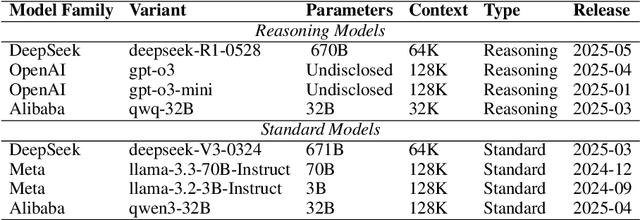
Abstract:Large language models achieve strong performance through training on vast datasets. Can analogical paradigm organization enable lightweight models to match this performance with minimal data? We develop a computational approach implementing three cognitive-inspired principles: analogical structure, contrastive learning, and minimal contextual cues. We test this approach with structured completion tasks where models identify correct sentence completions from analogical patterns with contrastive alternatives. Training lightweight models (BERT+CNN, $0.5M$ parameters) on only one hundred structured examples of English causative/inchoative alternations achieves $F1=0.95$, outperforming zero-shot \texttt{GPT-o3} ($F1=0.87$). Ablation studies confirm that analogical organization and contrastive structure improve performance, consistently surpassing randomly shuffled baselines across architectures. Cross-phenomenon validation using unspecified object alternations replicates these efficiency gains, confirming approach robustness. Our results show that analogical paradigm organization enables competitive linguistic rule learning with orders of magnitude less data than conventional approaches require.
Exploring syntactic information in sentence embeddings through multilingual subject-verb agreement
Sep 10, 2024Abstract:In this paper, our goal is to investigate to what degree multilingual pretrained language models capture cross-linguistically valid abstract linguistic representations. We take the approach of developing curated synthetic data on a large scale, with specific properties, and using them to study sentence representations built using pretrained language models. We use a new multiple-choice task and datasets, Blackbird Language Matrices (BLMs), to focus on a specific grammatical structural phenomenon -- subject-verb agreement across a variety of sentence structures -- in several languages. Finding a solution to this task requires a system detecting complex linguistic patterns and paradigms in text representations. Using a two-level architecture that solves the problem in two steps -- detect syntactic objects and their properties in individual sentences, and find patterns across an input sequence of sentences -- we show that despite having been trained on multilingual texts in a consistent manner, multilingual pretrained language models have language-specific differences, and syntactic structure is not shared, even across closely related languages.
Exploring Italian sentence embeddings properties through multi-tasking
Sep 10, 2024Abstract:We investigate to what degree existing LLMs encode abstract linguistic information in Italian in a multi-task setting. We exploit curated synthetic data on a large scale -- several Blackbird Language Matrices (BLMs) problems in Italian -- and use them to study how sentence representations built using pre-trained language models encode specific syntactic and semantic information. We use a two-level architecture to model separately a compression of the sentence embeddings into a representation that contains relevant information for a task, and a BLM task. We then investigate whether we can obtain compressed sentence representations that encode syntactic and semantic information relevant to several BLM tasks. While we expected that the sentence structure -- in terms of sequence of phrases/chunks -- and chunk properties could be shared across tasks, performance and error analysis show that the clues for the different tasks are encoded in different manners in the sentence embeddings, suggesting that abstract linguistic notions such as constituents or thematic roles does not seem to be present in the pretrained sentence embeddings.
Tracking linguistic information in transformer-based sentence embeddings through targeted sparsification
Jul 25, 2024Abstract:Analyses of transformer-based models have shown that they encode a variety of linguistic information from their textual input. While these analyses have shed a light on the relation between linguistic information on one side, and internal architecture and parameters on the other, a question remains unanswered: how is this linguistic information reflected in sentence embeddings? Using datasets consisting of sentences with known structure, we test to what degree information about chunks (in particular noun, verb or prepositional phrases), such as grammatical number, or semantic role, can be localized in sentence embeddings. Our results show that such information is not distributed over the entire sentence embedding, but rather it is encoded in specific regions. Understanding how the information from an input text is compressed into sentence embeddings helps understand current transformer models and help build future explainable neural models.
Are there identifiable structural parts in the sentence embedding whole?
Jun 24, 2024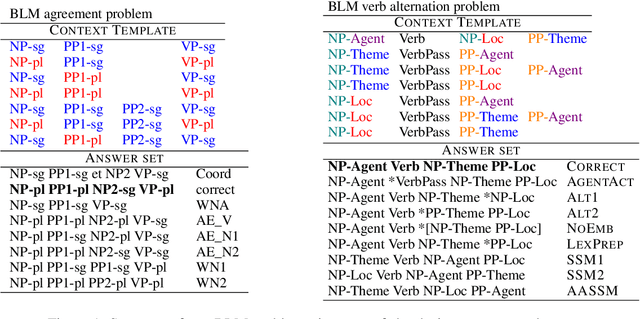

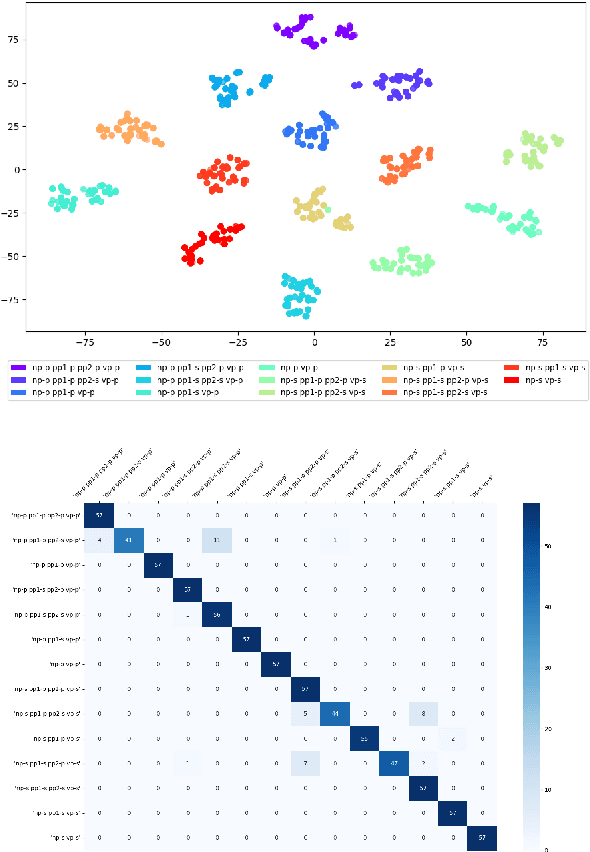
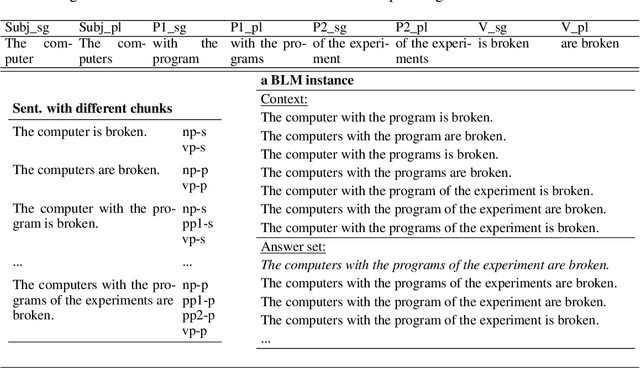
Abstract:Sentence embeddings from transformer models encode in a fixed length vector much linguistic information. We explore the hypothesis that these embeddings consist of overlapping layers of information that can be separated, and on which specific types of information -- such as information about chunks and their structural and semantic properties -- can be detected. We show that this is the case using a dataset consisting of sentences with known chunk structure, and two linguistic intelligence datasets, solving which relies on detecting chunks and their grammatical number, and respectively, their semantic roles, and through analyses of the performance on the tasks and of the internal representations built during learning.
Disentangling continuous and discrete linguistic signals in transformer-based sentence embeddings
Dec 18, 2023Abstract:Sentence and word embeddings encode structural and semantic information in a distributed manner. Part of the information encoded -- particularly lexical information -- can be seen as continuous, whereas other -- like structural information -- is most often discrete. We explore whether we can compress transformer-based sentence embeddings into a representation that separates different linguistic signals -- in particular, information relevant to subject-verb agreement and verb alternations. We show that by compressing an input sequence that shares a targeted phenomenon into the latent layer of a variational autoencoder-like system, the targeted linguistic information becomes more explicit. A latent layer with both discrete and continuous components captures better the targeted phenomena than a latent layer with only discrete or only continuous components. These experiments are a step towards separating linguistic signals from distributed text embeddings and linking them to more symbolic representations.
Grammatical information in BERT sentence embeddings as two-dimensional arrays
Dec 15, 2023Abstract:Sentence embeddings induced with various transformer architectures encode much semantic and syntactic information in a distributed manner in a one-dimensional array. We investigate whether specific grammatical information can be accessed in these distributed representations. Using data from a task developed to test rule-like generalizations, our experiments on detecting subject-verb agreement yield several promising results. First, we show that while the usual sentence representations encoded as one-dimensional arrays do not easily support extraction of rule-like regularities, a two-dimensional reshaping of these vectors allows various learning architectures to access such information. Next, we show that various architectures can detect patterns in these two-dimensional reshaped sentence embeddings and successfully learn a model based on smaller amounts of simpler training data, which performs well on more complex test data. This indicates that current sentence embeddings contain information that is regularly distributed, and which can be captured when the embeddings are reshaped into higher dimensional arrays. Our results cast light on representations produced by language models and help move towards developing few-shot learning approaches.
* Published in RepL4NLP 2023
Blackbird language matrices , a new task for rule-like generalization in neural networks: Motivations and Formal Specifications
Jun 20, 2023Abstract:We motivate and formally define a new task for fine-tuning rule-like generalization in large language models. It is conjectured that the shortcomings of current LLMs are due to a lack of ability to generalize. It has been argued that, instead, humans are better at generalization because they have a tendency at extracting rules from complex data. We try to recreate this tendency to rule-based generalization. When exposed to tests of analytic intelligence, for example, the visual RAVEN IQ test, human problem-solvers identify the relevant objects in the picture and their relevant attributes and reason based on rules applied to these objects and attributes. Based on the induced rules, they are able to provide a solution to the test. We propose a task that translates this IQ task into language. In this paper, we provide the formal specification for the task and the generative process of its datasets.
Blackbird's language matrices : a new benchmark to investigate disentangled generalisation in neural networks
May 22, 2022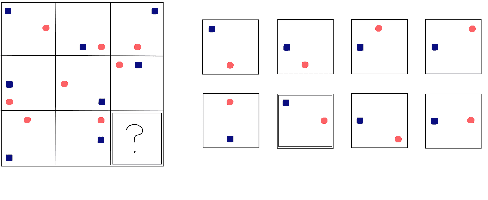
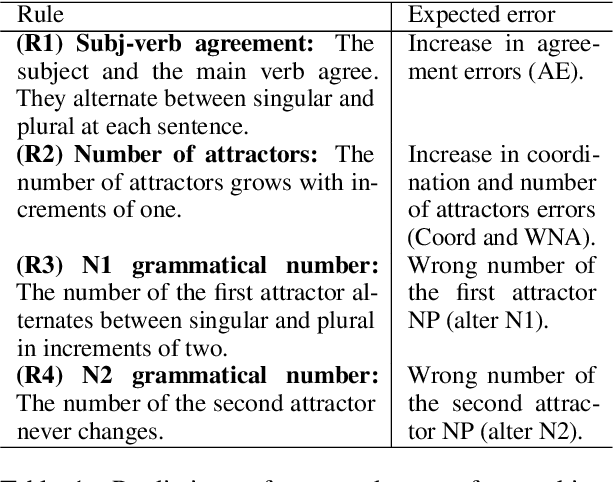
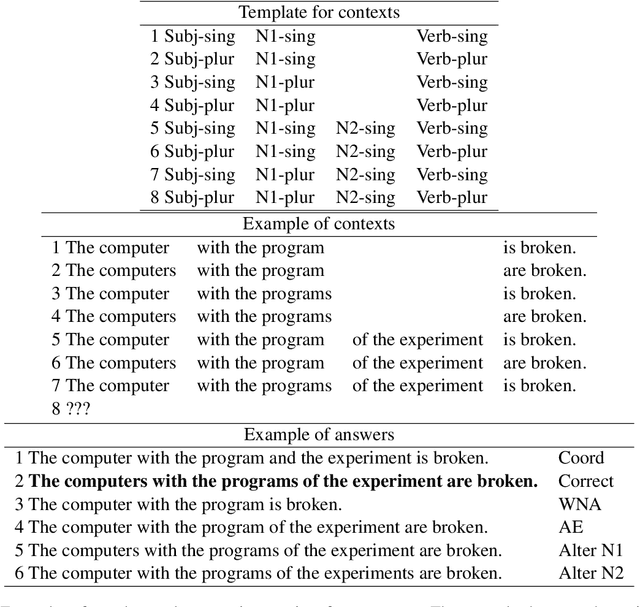

Abstract:Current successes of machine learning architectures are based on computationally expensive algorithms and prohibitively large amounts of data. We need to develop tasks and data to train networks to reach more complex and more compositional skills. In this paper, we illustrate Blackbird's language matrices (BLMs), a novel grammatical dataset developed to test a linguistic variant of Raven's progressive matrices, an intelligence test usually based on visual stimuli. The dataset consists of 44800 sentences, generatively constructed to support investigations of current models' linguistic mastery of grammatical agreement rules and their ability to generalise them. We present the logic of the dataset, the method to automatically construct data on a large scale and the architecture to learn them. Through error analysis and several experiments on variations of the dataset, we demonstrate that this language task and the data that instantiate it provide a new challenging testbed to understand generalisation and abstraction.
Multi-Adversarial Learning for Cross-Lingual Word Embeddings
Oct 16, 2020


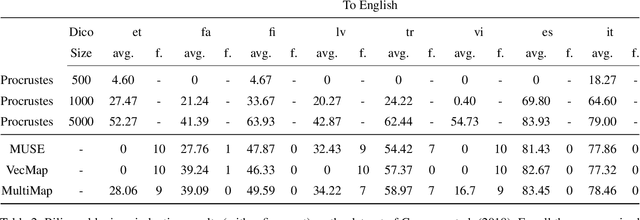
Abstract:Generative adversarial networks (GANs) have succeeded in inducing cross-lingual word embeddings -- maps of matching words across languages -- without supervision. Despite these successes, GANs' performance for the difficult case of distant languages is still not satisfactory. These limitations have been explained by GANs' incorrect assumption that source and target embedding spaces are related by a single linear mapping and are approximately isomorphic. We assume instead that, especially across distant languages, the mapping is only piece-wise linear, and propose a multi-adversarial learning method. This novel method induces the seed cross-lingual dictionary through multiple mappings, each induced to fit the mapping for one subspace. Our experiments on unsupervised bilingual lexicon induction show that this method improves performance over previous single-mapping methods, especially for distant languages.
 Add to Chrome
Add to Chrome Add to Firefox
Add to Firefox Add to Edge
Add to Edge